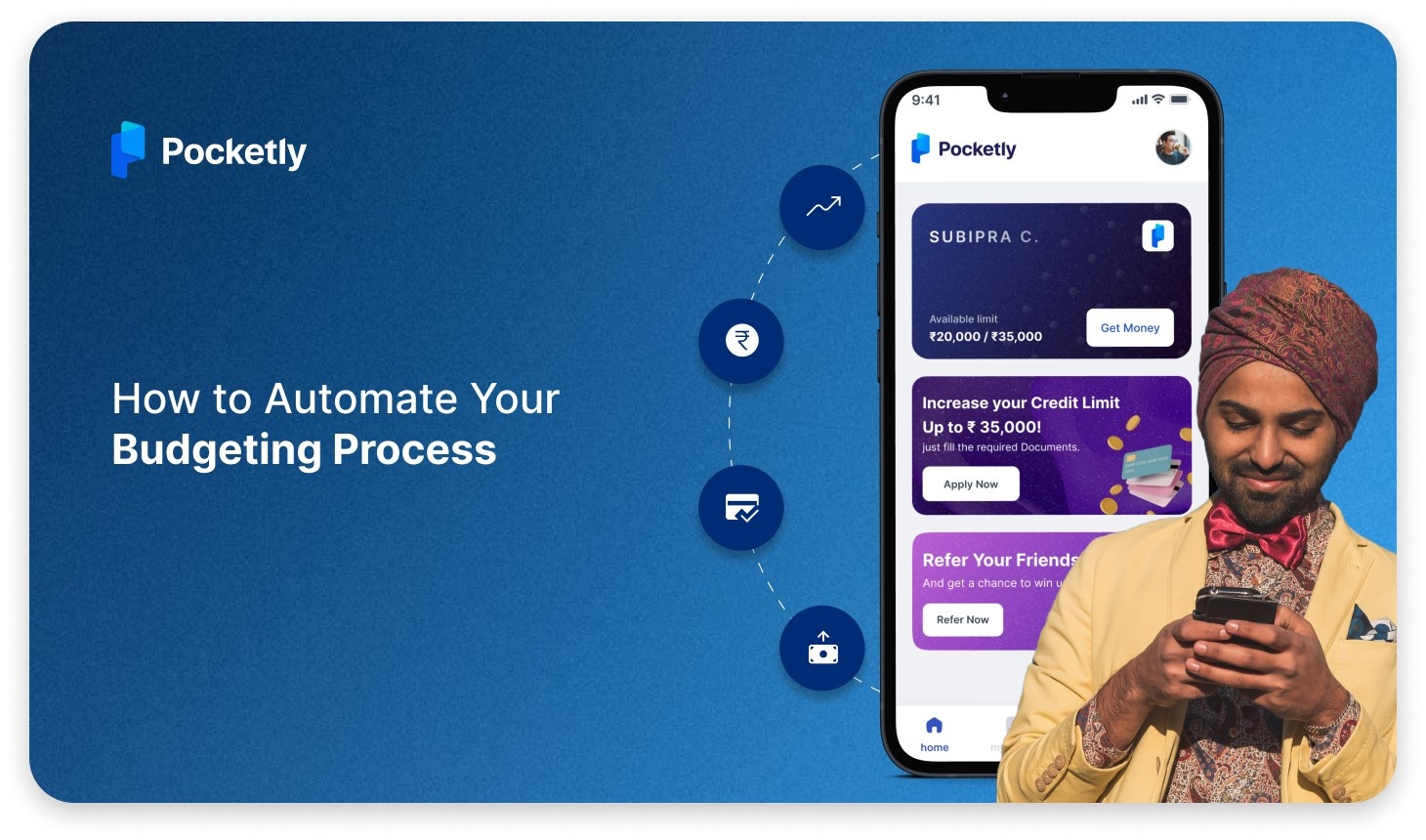
Have you ever wondered how lenders decide whether to approve your loan application? It’s not just about your income or job; your credit score plays a crucial role. In India, two major credit bureaus—CRIF High Mark and CIBIL (Credit Information Bureau India Limited), generate credit scores that assess your financial trustworthiness.
These scores determine how likely you are to repay loans on time and influence the terms and conditions of any loan you apply for. Knowing these differences can help you better interpret your credit report and take steps to improve your financial health.
In this blog, we’ll explore the meaning of CRIF and CIBIL scores, their key differences, and how they affect your credit profile. Whether you’re a first-time borrower or someone looking to enhance your creditworthiness, this guide will help you to make informed financial decisions.
Understanding CRIF and CIBIL Scores
When it comes to understanding your financial trustworthiness, credit scores from licensed bureaus like CRIF and CIBIL play a pivotal role. These scores provide a snapshot of how dependable you are in meeting your loan repayment obligations. Also, helping banks and financial institutions decide whether or not to approve your applications.
Let’s dive into what makes CRIF and CIBIL unique.
What is CRIF High Mark?
CRIF High Mark was established in 2007 as a collaboration between CRIF, a global credit bureau giant, and Indian stakeholders. It’s regulated by the Reserve Bank of India (RBI) and is one of the key players in India’s credit reporting landscape. CRIF provides credit scores that help lenders assess your creditworthiness, particularly for loans and credit cards.
What makes CRIF special is its focus on integrating global credit practices with local market needs. This allows it to offer reliable insights to both lenders and consumers.
What is CIBIL (TransUnion CIBIL)?
CIBIL, founded in 2000, was India’s first credit bureau and remains one of the most trusted names in the financial sector. Established by TransUnion in partnership with Indian financial institutions, it has become the go-to credit bureau for lenders when evaluating loan applications. Its scores are widely recognised by banks, making it a household name in the world of personal finance.
Let's understand it in more detail and learn the significant differences between CIBIL and CRF.
Key Differences Between CRIF and CIBIL
While both CRIF and CIBIL are authorised credit bureaus in India, they differ in several aspects, including their score ranges, operational focus, and methodologies. Let’s break down these differences in detail to help you understand their unique features:
1. CIBIL Credit Score
The CIBIL score is the gold standard for credit evaluation in India, recognised by nearly every lender. It provides a comprehensive view of your credit behaviour and is often the first reference point for banks and financial institutions when assessing loan or credit card applications.
Key Details
- Established:
Launched in 2000 by TransUnion CIBIL, making it India’s first credit bureau.
- Score Range:
Ranges from 300 to 900, with higher scores indicating stronger creditworthiness.
- Significance:
A score above 750 is generally considered excellent and can help you secure loans at lower interest rates and on more favourable terms.
- Data source:
CIBIL collects credit information primarily from its network of Indian banks and financial institutions. This gives it a localised focus, making it the most referenced bureau for loans in India.
- Market Presence:
Being the first credit bureau in India, CIBIL enjoys widespread recognition and trust among lenders, making it the most referenced credit score for loans and credit cards.
Factors Affecting Your CIBIL Score
- Payment History:
Your ability to make timely repayments on loans and credit cards directly impacts your score. Even one missed payment can hurt your score significantly, staying on your credit report for years.
- Credit Utilisation:
This refers to how much of your available credit limit you’re using. Keeping your utilisation below 30% signals financial responsibility, while higher utilisation suggests dependency on credit.
- Credit Mix:
A balanced mix of secured loans (like a home loan) and unsecured loans (like credit cards) reflects diversified and responsible credit usage. Over-reliance on unsecured loans can negatively impact your score.
- Recent Behaviour:
Applying for multiple loans or credit cards in a short span indicates financial stress and can lower your score. Lenders see frequent applications as a red flag.
CRIF Credit Score
Though not as widely known as CIBIL, the CRIF score has become an essential tool for many lenders. It provides an alternate evaluation of your creditworthiness, especially for banks that cross-reference multiple credit bureaus.
Key Details
- Established: Founded in 2007 as a collaboration between CRIF, a global leader in credit reporting, and Indian stakeholders.
- Score Range: Ranges from 300 to 850, with scores closer to 850 considered excellent.
- Significance: While slightly less recognised than CIBIL, CRIF scores are essential in determining loan approval decisions, particularly for lenders who rely on multiple credit reports to gauge borrower reliability.
- Licensing and Regulations: CIBIL operates under the guidelines of the Reserve Bank of India (RBI) and has a long-standing partnership with TransUnion, giving it a strong foothold in India’s financial landscape.
- Market Presence: Although relatively newer, CRIF has quickly gained traction due to its comprehensive analysis and data accuracy. Lenders are increasingly relieving it as a secondary source for credit evaluation.
Factors Influencing Your CRIF Score
- Repayment History:
Timely repayment of EMIs and credit card bills is the cornerstone of a good CRIF score. Consistency demonstrates reliability to lenders.
- Credit Utilisation Ratio:
Keeping your credit usage low—ideally under 30% of your total available limit—positively affects your CRIF score. This indicates that you manage credit well without over-relying on it.
- Length of Credit History:
The longer your credit history, the better your CRIF score. A well-maintained credit account over several years shows stability and responsible financial behaviour.
- Significance of CRIF:
CRIF scores are increasingly gaining importance among Indian banks and financial institutions. For borrowers who’ve struggled to maintain a high CIBIL score, a favourable CRIF score can serve as a strong secondary reference, improving the chances of approval.
Which One Matters More?
While both CRIF and CIBIL scores are important, CIBIL is more commonly referenced in India due to its longstanding presence. However, CRIF’s global credibility and rising adoption make it a valuable secondary reference, especially for borrowers seeking loans from lenders who cross-verify creditworthiness.
By understanding these differences, you can better interpret your credit reports and ensure your financial profile is strong across both platforms.
You might also check our guide, Understanding DBT, STD, LSS & DPD in CIBIL Report, to learn more about credit scores in detail.
How to Check Your CRIF Score
Checking your CRIF score is simple and can be done directly through the CRIF High Mark website or through financial institutions that utilise this score to assess creditworthiness. Here’s how you can do it:
- Visit the CRIF High Mark Website
- Head over to the official CRIF High Mark site.
- Click on “Get Your Score Now”
- On the homepage, look for the “Get Your Score Now” option and select it.
- Fill in Your Details
- Enter basic information like your name, the type of ID you’re using (e.g., PAN, Aadhaar), the ID number, and your contact details such as mobile number and email ID.
- Submit Your Request
- Once all the details are entered, click on the “Get My Credit Score” button.
That’s it! Your CRIF score will be displayed to help you understand your current credit standing. It’s a quick and easy way to stay on top of your credit health!
Tips to Improve Your Credit Score
Improving your credit score doesn’t happen overnight, but with some focused steps, you can boost it over time. Here are some straightforward tips that can help you get on track:
- Pay Bills on Time
- Missing payments can harm your credit score. Set up reminders or enable automatic payments to stay on track and avoid delays.
- Keep Credit Card Usage Below 30%
- Your credit utilisation ratio should ideally stay under 30%. For example, if your limit is ₹1,00,000, try not to exceed ₹30,000 in usage.
- Avoid Frequent Credit Applications
- Submitting applications for several loans or credit cards in a brief time frame can signal financial stress to lenders. Only apply when absolutely necessary.
- Monitor Your Credit Report Regularly
- Errors in your credit report can drag down your score. Check for inaccuracies and raise disputes promptly to correct them.
- Maintain Long-Standing Credit Accounts
- Older accounts add to the length of your credit history, which is good for your score. Keep them open even if you don’t use them often.
- Pay Off Outstanding Debts
- Clearing overdue amounts or accounts in collections improves your credit profile and reduces lender concerns.
By adopting these habits, you’ll not only strengthen your financial management but also enhance your overall creditworthiness.
And let’s be honest—unexpected expenses can pop up when you least expect them. That’s where Pocketly comes in! With instant financial support that’s quick, hassle-free, and tailored to your needs, Pocketly ensures you’re never left in a bind.
Here’s why it’s your go-to solution for those surprise financial moments!
Why Pocketly is Your Top Choice for Instant Personal Loans
When you need a personal loan fast, Pocketly is designed to be your trusted solution. Here’s why Pocketly stands out and how it could be the perfect fit for you:
- Simple and Intuitive App Experience
- Pocketly’s user-friendly interface makes applying for a loan a breeze. With easy navigation and minimal forms, you can easily focus on your financial goals without the added stress of complicated applications.
- Instant Disbursal
- Once approved, Pocketly transfers funds directly to your account, often within minutes. This speed means you get the cash you need exactly when you need it, whether for unexpected expenses or planned purchases.
- Flexible Repayment Options
- Pocketly understands that flexibility matters. With customisable repayment plans, you can choose terms that fit your budget, making it easier to manage your monthly payments.
- Transparent, No-Hidden-Fees Policy
- Borrow with confidence—Pocketly is transparent about all fees, with no hidden charges. You’ll know exactly what you’re paying, which adds peace of mind to your borrowing experience.
Let’s quickly learn the steps to apply for an instant personal loan via Pockelty.
How to Apply for an Instant Personal Loan with Pocketly
Need quick cash but don’t want the headaches of a traditional loan process? Pocketly has you covered. Here’s how you can get a personal loan in just a few easy steps:
- Download the Pocketly App: Get the app from the Play Store or App Store. Sign up with your mobile number and create an account.
- Enter Your Info: Once your account is set up, simply fill in your basic details—name, address, employment status. It’s quick and easy!
- Pick Your Loan Amount & Tenure: Whether you need ₹1,000 or ₹25,000, Pocketly gives you the flexibility to choose. Select how much you need and how long you’d like to repay it—so you have complete control over your monthly payments.
- Upload Simple Documents: There is no endless paperwork here! Just upload digital proof of your ID and bank statements. Pocketly makes it easy and stress-free.
- Get Instant Approval & Cash: Once your details are verified, Pocketly moves quickly. After the approvals process, in minimum time the funds will be credited to your registered account.
With Pocketly, accessing a personal loan is stress-free and designed to meet your needs. Let’s walk through how to apply for a loan with Pocketly and make the process smooth and straightforward!
Also, read our guide to save time and effort Applying for a 3000 Rupees Personal Loan Urgently.
Conclusion
Improving your credit score isn’t a sprint; it’s a journey of small, consistent steps. By paying your dues on time, keeping credit usage low, and monitoring your credit report regularly, you can steadily build a stronger financial profile. A good credit score doesn’t just improve your loan approval chances—it also opens doors to better interest rates, higher credit limits, and more financial freedom.
But let’s face it: life can be unpredictable. When you need cash urgently, waiting for your credit score to improve might not be an option. That’s where Pocketly steps in as your reliable financial partner. Whether it’s unexpected expenses or a short-term cash crunch, Pocketly offers quick personal loans with minimal hassle—even if your credit score isn’t perfect.
Download the Pocketly app today and take control of your finances with instant loan options that fit your needs!
FAQs
What is the purpose of CRIF and CIBIL?
Both are credit bureaus that assess a borrower’s creditworthiness to help lenders make informed decisions.
What’s the difference in their score ranges?
CIBIL scores range from 300 to 900, while CRIF scores range from 300 to 850.
How can I dispute an error in my credit report?
Contact the respective bureau through their dispute resolution process, provide necessary documentation, and request corrections.
Which bureau should I rely on for my credit report?
Both are reliable. CIBIL is more widely used, but checking reports from both can provide a comprehensive view.
Can I apply for a Pocketly loan if my credit score is low?
Yes, Pocketly understands that financial needs can arise unexpectedly. Even with a low credit score, you can apply for a personal loan, as the platform considers multiple factors to approve your application.
How much money can I borrow through Pocketly?
Pocketly offers flexible loan amounts ranging from ₹1,000 to ₹25,000, making it ideal for managing small, urgent expenses without the stress.
Are there any hidden charges in Pocketly loans?
No, Pocketly believes in complete transparency. All charges, including processing fees and interest rates, are clearly mentioned during the application process, so there are no surprises later.














